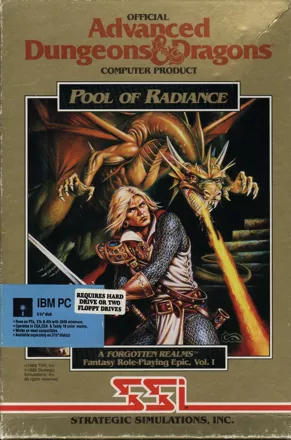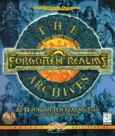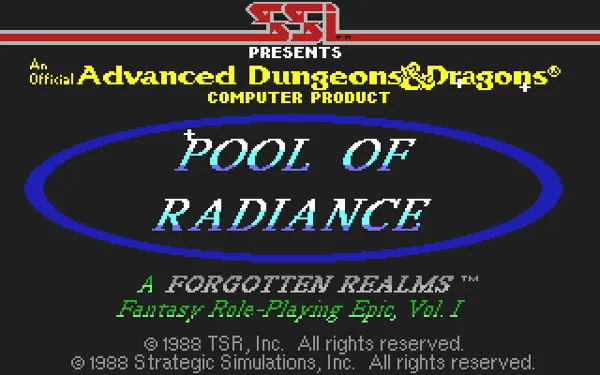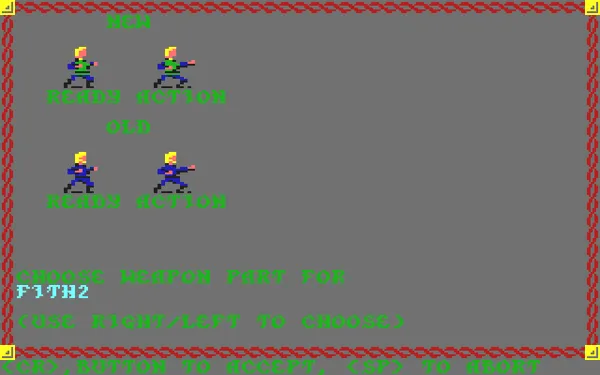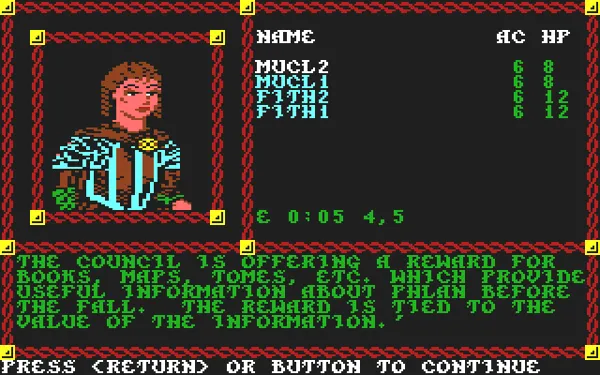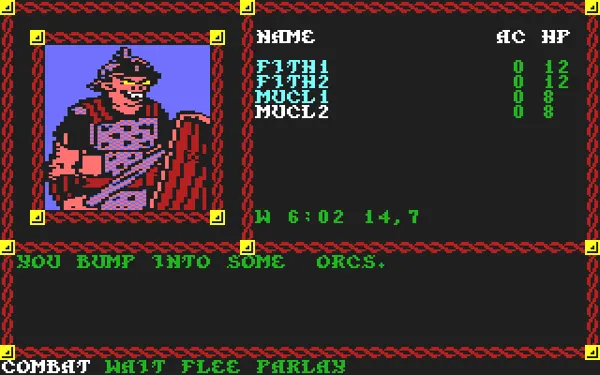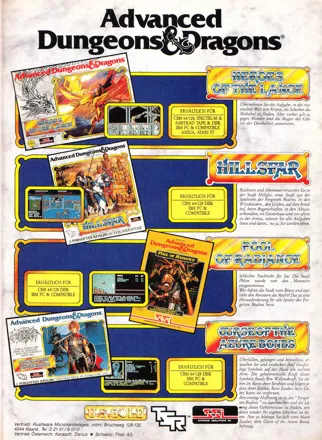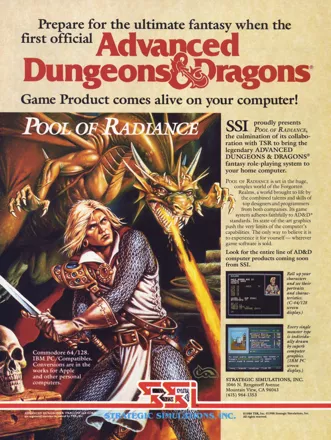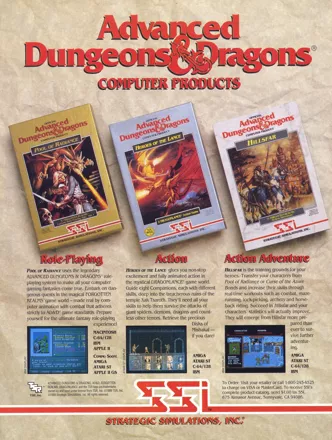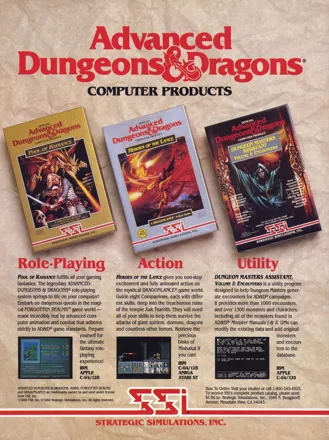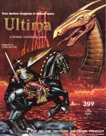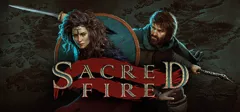Pool of Radiance
Description official descriptions
Located on the northern shore of the Moonsea in Forgotten Realms, Phlan was once a flourishing trade city. However, lately monsters began settling in it, gradually turning whole districts into ruins. Only New Phlan remained under human control, but its inhabitants are afraid to venture into the monster-infested areas. In order to clean the nearby Barren River and rebuild Phlan, local authorities spread rumors about alleged riches hidden somewhere in the city. A party of adventurers, attracted by these news, sails towards Phlan and accepts the quest.
Pool of Radiance is the first adaptation of the Advanced Dungeons & Dragons role-playing system in a computer game format. In the beginning of the game the player can use a pre-made party of six characters or create each of them from scratch. Six races (human, elf, dwarf, gnome, halfling, and half-elf) and four classes (fighter, cleric, wizard, and thief) are available. The player can tweak the attributes of the characters and assign a moral alignment to each one.
Exploration of the town and hostile areas (dungeons) is viewed from a first-person perspective in a pseudo-3D world. Enemy encounters are random and take place on separate isometric combat screens, where player-controlled party and enemies take turns fighting each other. Experience points are awarded for defeating enemies, and characters level up after having accumulated set amounts. Fighters gain more attacks, thieves become proficient in backstabbing, while clerics and wizards can memorize more spells to cast before they need to rest. Non-human characters can also "multi-class" (learn the abilities of another class) when leveling up.
The NES version was substantially different from other versions. It removed references to the Adventure's Journal and some of the more complex features of the computer versions, like different currency units. Battles were significantly reduced in size, the graphics were overhauled and redesigned so that the game could be controlled with a control pad, and music was written for it. A randomly generated dungeon feature was also removed.
Spellings
- プール・オブ・レイディアンス - Japanese spelling
- 光芒之池 - Chinese spelling (simplified)
Groups +
- Dungeons & Dragons (D&D / AD&D) licensees
- Dungeons & Dragons Campaign Setting: Forgotten Realms
- Fantasy creatures: Dwarves
- Fantasy creatures: Elves
- Fantasy creatures: Gnomes
- Fantasy creatures: Goblins
- Fantasy creatures: Halflings / Hobbits
- Fantasy creatures: Minotaurs
- Fantasy creatures: Orcs
- Gameplay feature: Character development - Automatic leveling
- Gameplay feature: Paragraph book
- Games made into books
- Games with code-wheel copy protection
- Gold Box series
- Pool of Radiance series
- Protagonist: Female (option)
Screenshots
Promos
Credits (DOS version)
42 People · View all
| Scenario created by TSR, Inc. | |
| Game Created by |
|
| Programmers | |
| Additional Programming |
|
| Artists | |
| Additional Art by |
|
| Music | |
| Sound Effects | |
| [ full credits ] | |
Reviews
Critics
Average score: 78% (based on 24 ratings)
Players
Average score: 3.6 out of 5 (based on 99 ratings with 9 reviews)
The proud progenitor of the infamous AD&D Gold Box series
The Good
Pool of Radiance was the first game in the long-running 'gold box' series by SSI, the first successful attempt to truly bring the rules and worlds of AD&D to the PC. It was close enough to the rules system to be familar to those who played the AD&D paper and pencil role-playing games and did most of the number crunching behind the scenes, like any good conversion should.
Pool of Radiance allowed players to create most of the basic AD&D race/class combinations, which, once you start talking split classes for demi-humans, does add to a considerable amount of variety in the party. Because SSI wanted people to be able to import their paper and pencil characters, there are options to modify a recently created character, altering the stats. While this can be used for its intended purpose (or to cheat and make every stat an 18), it also allowed one to create a character exactly like you wish, saving the time re-rolling one's character over and over. As a finishing touch, you could even design how your character looks in combat by playing with various color settings and body/weapon types. These levels of personalization not only made it easier to pick what character was which in combat, but made the characters much more personal and the player's 'property' than simply pixels on the screen.
The game engine established in this game was done so well that it survived years with only minor tweaking. Similar to games like Might and Magic and Bard's Tale, you have a small first-person view in the upper left corner of the screen, a party status along the bottom, and a menu/descriptive box on the right. The design of the walls and other physical structure in the first person view are often well done, despite the necessary 'flat' appearance of the time and this window would switch to show you the creatures you encounter/people you are talking with. The fact that you only switched out of this particular setup for combat kept the pace smooth and even.
The combat mode was very innovative for its time. Instead of the standard text messages sweeping by as character abstractly move and attack, you are presented with a full tactical engine which included missile weapons, magic, facing, and morale. Your chosen-designed characters could flank, setup a defensive line behind a choke-point, and generally do whatever you'd want your characters to do in a paper and pencil game. The freedom, detail, and creativity put into this part of the engine is part of what made the Gold Box games what they are.
The story was rich enough to keep one entertained and the meat of the game was non-linear, as you were presented with 'bounties' for doing certain deeds in and around Phlan. You could choose the missions as you saw fit and return to incomplete quests at your leisure. While there was a basic structure to follow if you wanted to progress from easy to difficult missions, there was no stopping you from risking life and limb on something too difficult.
The Bad
Being a game of the period of infamous copy protection schemes, everytime you played the game you had to enter a code word from a code wheel. Though not the most annoying of set schemes, it became a tedious excercise none-the-less.
To conserve disk space (remember the days when text was a major consideration in disk space?) and further increase the copy protection, this game, like Wasteland and others, incorporated a hardcopy journal from which one read most of the major scenes and conversations. This occassionally upsets the pace a bit (you're talking to an elven lady, suddenly it tells you that 'you record the rest of the conversation as journal entry #43', sending you flipping through a book rather than being immersed in the game), and also makes re-playing the game a little difficult if you can't find the journal. On the plus side, instead of a whole notebook of jotted notes, you can simply write down the journal entries you've read and refer to them if you ever need a password, etc.
The engine couldn't always do what the AD&D universe wanted. A perfect example is a fairly early encounter with Trolls. As most AD&D players know, trolls regenerate if not burned. Unfortunately, there's no way to burn the trolls' corpses, so one finds themselves in a frustrating battle with constantly resurrecting trolls until one realizes that one needs to stand on their corpes to prevent resurrection. A little goofy and not entirely logical. Such things happen few times in the game, but one can easily chalk it up to the limitations of the engine and the computers they ran on.
The Bottom Line
A true classic CRPG that set the standard for many years. It's wonderful customization, adherence to AD&D rules, and story make it a game worth playing by serious RPG fans. Lead a party of six adventurers on a quest to restore the glory of the fallen town.
DOS · by Ray Soderlund (3501) · 2000
The Good
Well, most everything. The game starts out with you creating a group of adventurers, I don't remember how many you can create, but you can create alot.
You then explore in a first person veiw. This veiw has good graphics, for the time.
Then you fight, when you find bad guys, from a isemetric veiw. You move around and attack. It works well, even compaired to things like "Balders Gate", mabye even better.
Thats basicly all you do. That may not sound like alot, but it is. Theres lots of challenges and things to do.
The Bad
Makeing your figure in battles look the way you want is sorta hard.
The use of a code wheel, those things are annoying and this is exactly why.
The Bottom Line
lots of fun. Buy it.
DOS · by Wolfang (155) · 2000
Timeless classic for the hardcore old school RPG gamers
The Good
I remember paying almost 70 dollars for this game when it was released on the C-64 and it was the best recreation of AD&D paper n pen game until Baldur's Gate was released. This game was EXTREMELY difficult, we even had the official clue-book and it was still tough. This game demanded patients and the will to explore vast regions with little success of completely covering every inch of the region.
The game drops you off in Phlan and BAM! You're on your own to go which ever way you want and do what ever you please. Thats what I loved about these SSI goldbox games, they didn't hold your hand while you sucked your thumb through the whole game.... no no no... these games were for people who loved a challenge. If you don't believe me, remember the Sokal Keep battle? like 6 huge waves of Orcs and Kobalds.... that battle alone took me more than an hour and died many times.
This game and all in it's series were extremely faithful to the 2nd AD&D rules which is a huge plus in my book. The graphics and sounds were amazing for what the C-64 was capable of. I wish I could give you an exact amount of gameplay hours this game contained but its just not possible. There is lots you can skip and lots you can't. Leveling up is that of a miracle, it happens only about 7 times if you are a fighter. Which in other words means, THIS GAME IS TOUGH. But when is it not tough when your highest level party member is only 7th level max??
The city of Phlan and all of the regions surrounding it are enormous and leaves players with hours upon hours of exploration time. This is a classic RPG and really the best SSI goldbox AD&D game ever created. Only until Baldur's Gate was there a game that compared in my opinion.
The Bad
I think any complaint I had about this game was more of a complaint about the C-64's performance than the game itself. Loading time, disk swapping etc.... all of which aren't the game designers fault rather the fault lies on the technology at the time. This was greatly improved with the release of the IBM AT/XT version (DOS version)
The Bottom Line
Timeless RPG classic for hardcore RPG gamers. If you're a real classic AD&D RPG fan, you HAVE to play this. This game in itself IS FLAWLESS. 3 thumbs up if I had an extra one.
Commodore 64 · by OlSkool_Gamer (88) · 2004
Discussion
| Subject | By | Date |
|---|---|---|
| Are you sure there's a PC-88 version of this game? | RetroArchives.fr (709) | Jan 26, 2022 |
| CCS64 loading | Ossie1972 | Jul 20, 2010 |
| Manual? | SharkD (425) | Feb 23, 2010 |
Trivia
Adaption
This was the first Advanced Dungeons and Dragons (AD&D) game ever created by the software developer Strategic Simulations, Inc. (SSI). AD&D was originally a popular fantasy role playing game system developed by a company called TSR, Inc.. SSI adapted this role playing system to the PC in 1988. Pool of Radiance was also first of the many AD&D games to follow that are set within the Forgotten Realms. The game was so successful that it caused TSR to write a novel based on the story in the book.
In the same year, SSI released two more of these newly developed AD&D PC games: Heroes of the Lance and Dungeon Masters Assistant Volume 1: Encounters.
Copy protection
This game used 2 forms of copy protection: Code Wheel lookup at start-up and a Journal to read important text passages.
Cover art
The game box's cover features a painting by artist Clyde Caldwell, also used as the front cover to the 1989 novel of the same name as well as to the 1988 RPG module "Ruins of Adventure" inspiring both.
Monster portraits
Many of the monster illustrations of the Macintosh version can be found in one of the AD&D 2nd edition accessories, the Monstrous Compendium Volume One.
Other ports
An Atari ST conversion was advertised, but is generally considered vaporware, the strongest indication probably being the lack of an import option of Pool of Radiance characters in the sequel (Curse of the Azure Bonds) which the other versions offer.
A port for the Apple IIGS was also advertised, solid evidence that it was released has yet to emerge.
Awards
- GameStar (Germany)
- Issue 12/1999 - #49 in the "100 Most Important PC Games of the Nineties" ranking
Information also contributed by Indra was here, Pseudo_Intellectual, William Muir and Yakumo .
Analytics
Upgrade to MobyPro to view research rankings!
Related Sites +
-
Commodore 64 Boxed Sets
For C64: game packaging digitalisations. Include box, manual, brochure, additional material. -
DOSBox, an x86 emulator with DOS
Compatibility information page about the original game and its DOSBox versions. -
Dragonbait's Pool of Radiance Page
A walkthrough with images. -
Fan Site
Pool of Radiance fan sight -
Hall of Light
For Amiga: game database entry; digitalised manuals; game packaging; screenshots; additional material. -
Lemon 64
For Commodore 64: game entry database; advertisement; magazine reviews; music; documentation; cover art; additional material. -
Macintosh Garden, an abandonware games archive
For Macintosh: reviews; game packaging; downloadable releases; manual; screenshots; additional material. -
Museum of Computer Adventure Game History (Amiga)
For Amiga: game packaging; manuals; media; additional material. -
Museum of Computer Adventure Game History (C64)
For Commodore 64: game packaging; manuals; media; additional material. -
Museum of Computer Adventure Game History (Clamshell, C64)
For Commodore 64: game packaging; manuals; media; additional material. -
Museum of Computer Adventure Game History (FCI, NES)
For Nintendo: game packaging; manuals; media; additional material. -
Museum of Computer Adventure Game History (PC)
For IBM PC: game packaging; manuals; media; additional material. -
Museum of Computer Adventure Game History (Pony Canyon, NES)
For Famicom: game packaging; manuals; media; additional material. -
Pool of Radiance at Game Banshee
Walkthrough, screenshots, information, additional material. -
Replacementdocs (C64, Quick Reference Card)
Documentation for Commodore 64. -
Replacementdocs (PC, Adventurers Journal)
Documentation for DOS/Windows. -
Replacementdocs (PC, Cluebook)
Documentation for DOS/Windows. -
Replacementdocs (PC, Code Wheel)
Documentation for DOS/Windows. -
Replacementdocs (PC, Manual)
Documentation for DOS/Windows. -
Replacementdocs (PC, Quick Reference Card)
Documentation for DOS/Windows.
Identifiers +
Contribute
Are you familiar with this game? Help document and preserve this entry in video game history! If your contribution is approved, you will earn points and be credited as a contributor.
Contributors to this Entry
Game added by Tony Van.
PC-88 added by Trypticon. Commodore 64, Amiga added by Rebound Boy. Macintosh added by Andy Voss. PC-98, Apple II added by Terok Nor. NES, Sharp X1 added by Unicorn Lynx.
Additional contributors: Unicorn Lynx, Indra was here, Jeanne, Trypticon, Patrick Bregger, Rik Hideto, ZeTomes.
Game added December 1, 1999. Last modified April 2, 2024.
